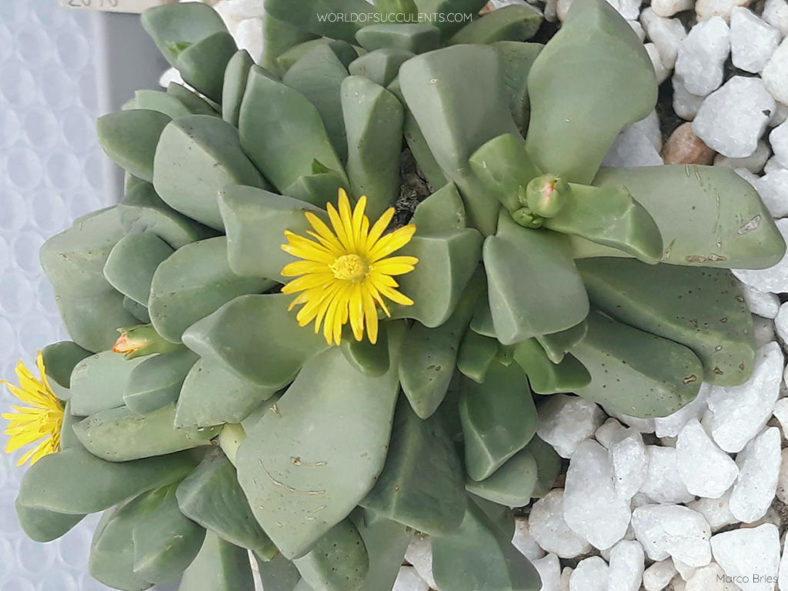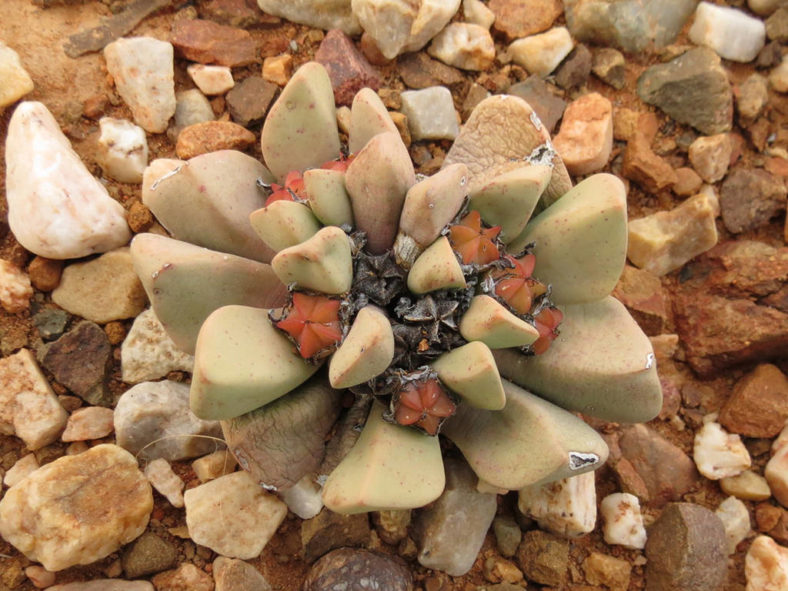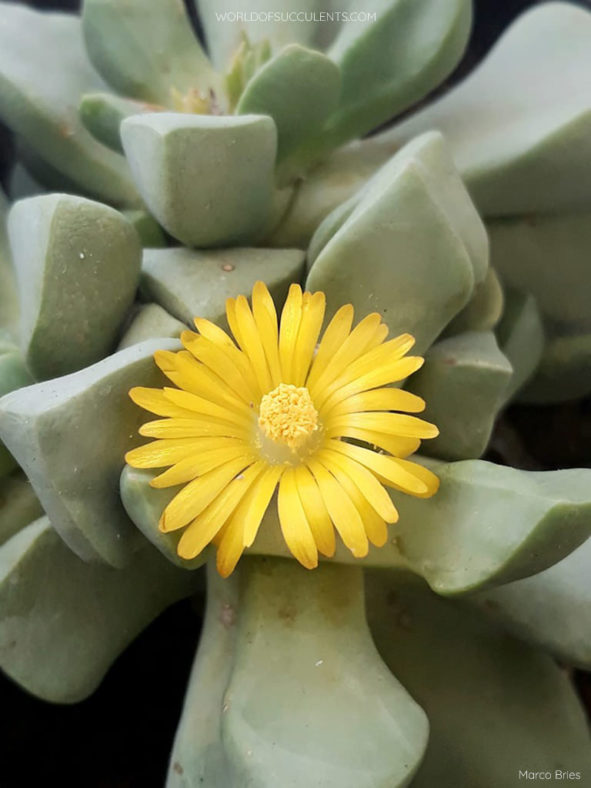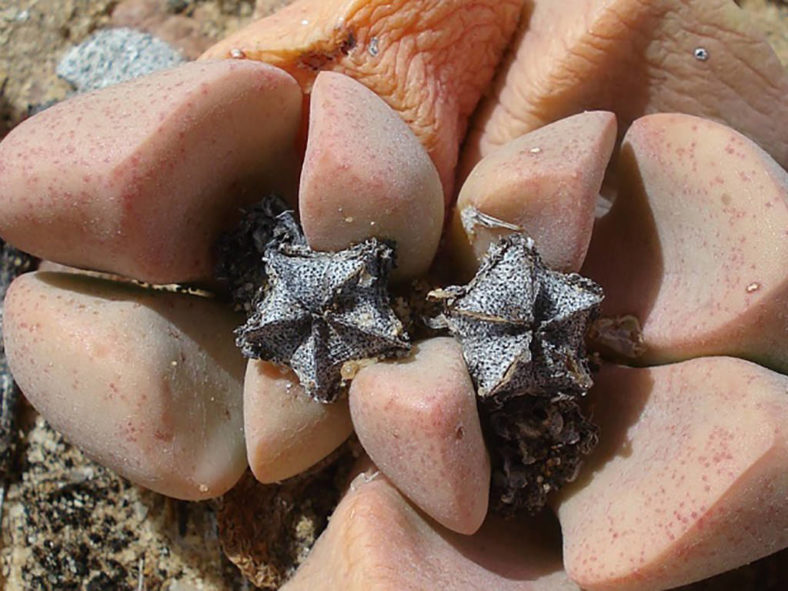Scientific Name
Bijlia dilatata H.E.K.Hartmann
Common Name(s)
Clay Prince Albert Vygie, Prince Albert Vygie
Synonym(s)
Bijlia cana (misapplied), Bolusanthemum tugwelliae, Hereroa cana
Scientific Classification
Family: Aizoaceae
Subfamily: Ruschioideae
Tribe: Ruschieae
Genus: Bijlia
Etymology
The specific epithet "dilatata (dil-uh-TAY-tuh)" means "extended, dilated" and refers to the broad leaves of the species.
Origin
Bijlia dilatata is native to South Africa. It grows on flats with broken dolerite and quartzite gravel at a few locations near Prince Albert in the Western Cape province.
Description
Bijlia dilatata is a dwarf tufted, almost stemless succulent that forms rosettes of whitish-green, irregularly club-shaped leaves. It usually has 2 to 3 very short branches topped with clusters of rosettes, spreading to 4.8 inches (12 cm) or more in diameter. The leaves are fleshy, smooth, triangular in cross-section, and are almost as thick as broad. They can grow up to 2 inches (5 cm) long and 1 inch (2.5 cm) wide.
The yellow, long-lasting flowers appear solitary or in groups of up to 3 in late fall and may continue through the winter. They are daisy-like, short-stalked, and can reach up to 2 inches (5 cm) in diameter. The fruits are 5-locular capsules.

How to Grow and Care for Bijlia dilatata
Light: This succulent needs bright light but does not like too much direct sun. A sunny windowsill where the plant receives 4 to 5 hours of direct sunlight during the early part of the day and partial shade during the afternoon is the perfect spot to grow your B. dilatata indoors.
Soil: B. dilatata thrives best in porous soil mixes that allow water to drain away quickly. You can use a commercial potting mix specially designed for succulents or make your own.
Temperature: This plant has no problem with high temperatures as long as there is plenty of fresh air, but it is not a cold-hardy succulent. B. dilatata can withstand temperatures as low as 30 °F (-1.1 °C) in USDA Plant Hardiness Zones 10a to 11b, 30 to 50 °F (-1.1 to 10 °C).
Watering: B. dilatata requires little or no water when it goes dormant, usually in summer. When it begins to grow again in fall, it is safe to water deeply, allowing the soil to dry before between waterings. If leaves start to wrinkle during active growth, your plant needs water.
Fertilizing: This small succulent is a light feeder and does not need fertilizer if repotted every two years.
Repotting: This small succulent will stay happy in the same pot for several decades. The common reason for repotting is to divide or to give the plant a larger growing space. The best time to repot B. dilatata is at the beginning of the active growth period, but the repotting can be done almost any time while the plant is actively growing.
Propagation: This species is usually grown from seeds but is also easily propagated by division. The best time to divide B. dilatata is in late summer before it begins to break dormancy. Sow the seeds in the fall in a pot with a well-drained soil mix.
Learn more at How to Grow and Care for Mesembs.
Toxicity of Bijlia dilatata
B. dilatata is considered non-toxic to humans and pets.
Links
- Back to genus Bijlia
- Succupedia: Browse succulents by Scientific Name, Common Name, Genus, Family, USDA Hardiness Zone, Origin, or cacti by Genus
Photo Gallery


